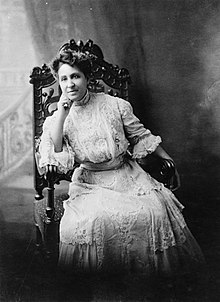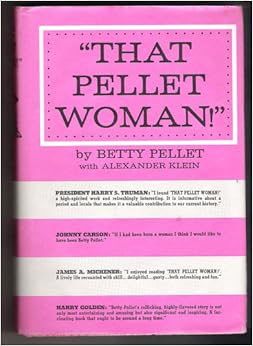Wishing all a very peaceful, prosperous 2014 filled with joy, love and creativity!!
To begin this auspicious New Year a quote from Mary Oliver, one of my all time favorite poets. It is if she writes for me, and me along! Of course I know that isn't the case but she so often really hits my heart as if it had a bulls eye and she can see it.
" I want to think again of dangerous and noble things...I want to be improbable and beautiful and afraid of nothing as thought I had wings."
Wishing you all wings for this fresh, new year!

Mary and her best friend!
Poet Mary Oliver is an “indefatigable guide to the natural
world,” wrote Maxine Kumin in the Women’s
Review of Books, “particularly to its lesser-known aspects.”
Oliver’s verse focuses on the quiet of occurrences of nature: industrious
hummingbirds, egrets, motionless ponds, “lean owls / hunkering with their
lamp-eyes.” Kumin noted that Oliver “stands quite comfortably on the margins of
things, on the line between earth and sky, the thin membrane that separates
human from what we loosely call animal.” Oliver’s poetry has won numerous
awards, including the Pulitzer Prize, the National Book Award and a Lannan
Literary Award. Reviewing Dream
Work(1986) for the Nation, critic Alicia Ostriker numbered Oliver among America’s finest
poets, as “visionary as [Ralph Waldo] Emerson.”
Mary Oliver was born in 1935 in Maple Heights, Ohio. She attended both Ohio
State University and Vassar College, but did not receive a degree from either
institution. As a young poet, Oliver was deeply influenced by Edna St. Vincent Millay and briefly lived in Millay’s home, helping Norma Millay
organize her sister’s papers. Oliver is notoriously reticent about her private
life, but it was during this period that she met her long-time partner, Molly
Malone Cook. The couple moved to Provincetown, Massachusetts, and the
surrounding Cape Cod landscape has had a marked influence on Oliver’s work.
Known for its clear and poignant observations and evocative use of the natural
world, Oliver’s poetry is firmly rooted in place and the Romantic nature
tradition. Her work received early critical attention; American
Primitive (1983), her fifth book, won the
Pulitzer Prize. According to Bruce Bennetin the New
York Times Book Review, American Primitive, “insists on the primacy of the
physical.” Bennet commended Oliver’s “distinctive voice and vision” and
asserted that the “collection contains a number of powerful, substantial
works.” Holly Prado of the Los Angeles Times Book Review also applauded Oliver’s original
voice, writing that American Primitive “touches a vitality in the familiar
that invests it with a fresh intensity.”
Dream Work (1986) continues Oliver’s search to
“understand both the wonder and pain of nature” according to Prado in a later
review for the Los Angeles Times Book Review. Ostriker considered Oliver “among the
few American poets who can describe and transmit ecstasy, while retaining a
practical awareness of the world as one of predators and prey.” For Ostriker, Dream
Work is ultimately a
volume in which Oliver moves “from the natural world and its desires, the
‘heaven of appetite’...into the world of historical and personal
suffering...She confronts as well, steadily,” Ostriker continued, “what she
cannot change.”
The transition from engaging the natural world to engaging more personal realms
is also evident in New and Selected Poems (1992), which won the National
Book Award.The
volume contains poems from eight of Oliver’s previous volumes as well as
previously unpublished, newer work. Susan Salter Reynolds, in the Los
Angeles Times Book Review, noticed
that Oliver’s earliest poems are almost always oriented towards nature, but
seldom examine the self and are almost never personal. In contrast, Oliver
appears constantly in later works. But as Reynolds noted “this
self-consciousness is a rich and graceful addition.” Just as the contributor
for Publishers Weekly called particular attention to the
pervasive tone of amazement with regard to things seen in Oliver’s work,
Reynolds found Oliver’s writings to have a “Blake-eyed revelatory quality.”
Oliver summed up her desire for amazement in her poem “When Death Comes” from New
and Selected Poems: “When
it’s over, I want to say: all my life / I was a bride married to amazement. / I
was the bridegroom, taking the world into my arms.”
Oliver continues her celebration of the natural world in later collections,
includingWinter Hours: Prose,
Prose Poems, and Poems (1999), Why
I Wake Early (2004),New and Selected Poems, Volume 2 (2004), and Swan:
Poems and Prose Poems(2010). Critics have compared Oliver to other
great American lyric poets and celebrators of nature, including Marianne Moore, Elizabeth Bishop, Edna St. Vincent Millay, John Muir, and Walt Whitman. “Oliver’s poetry,” wrote Poetry contributorRichard Tillinghast in a review of White
Pine (1994)
“floats above and around the schools and controversies of contemporary American
poetry. Her familiarity with the natural world has an uncomplicated,
nineteenth-century feeling.”
A prolific writer of both
poetry and prose, Oliver publishes a new collection every year or two. Her main
themes continue to be the intersection between the human and the natural world,
as well as the limits of human consciousness and language in articulating such
a meeting. Jeanette McNew in Contemporary Literature described “Oliver’s visionary
goal,” as “constructing a subjectivity that does not depend on separation from
a world of objects. Instead, she respectfully confers subjecthood on nature,
thereby modeling a kind of identity that does not depend on opposition for
definition…At its most intense, her poetry aims to peer beneath the
constructions of culture and reason that burden us with an alienated
consciousness to celebrate the primitive, mystical visions that reveal ‘a mossy
darkness – / a dream that would never breathe air / and was hinged to your
wildest joy / like a shadow.’”
Mary Oliver held the
Catharine Osgood Foster Chair for Distinguished Teaching at Bennington College
until 2001. In addition to such major awards as the Pulitzer and National Book
Award, Oliver has received fellowships from the Guggenheim Foundation and the
National Endowment for the Arts. She has also won the American Academy of Arts
& Letters Award, the Poetry Society of America’s Shelley Memorial Prize and
Alice Fay di Castagnola Award. She lives in Provincetown, Massachusetts.
From the National Poetry Foundation















